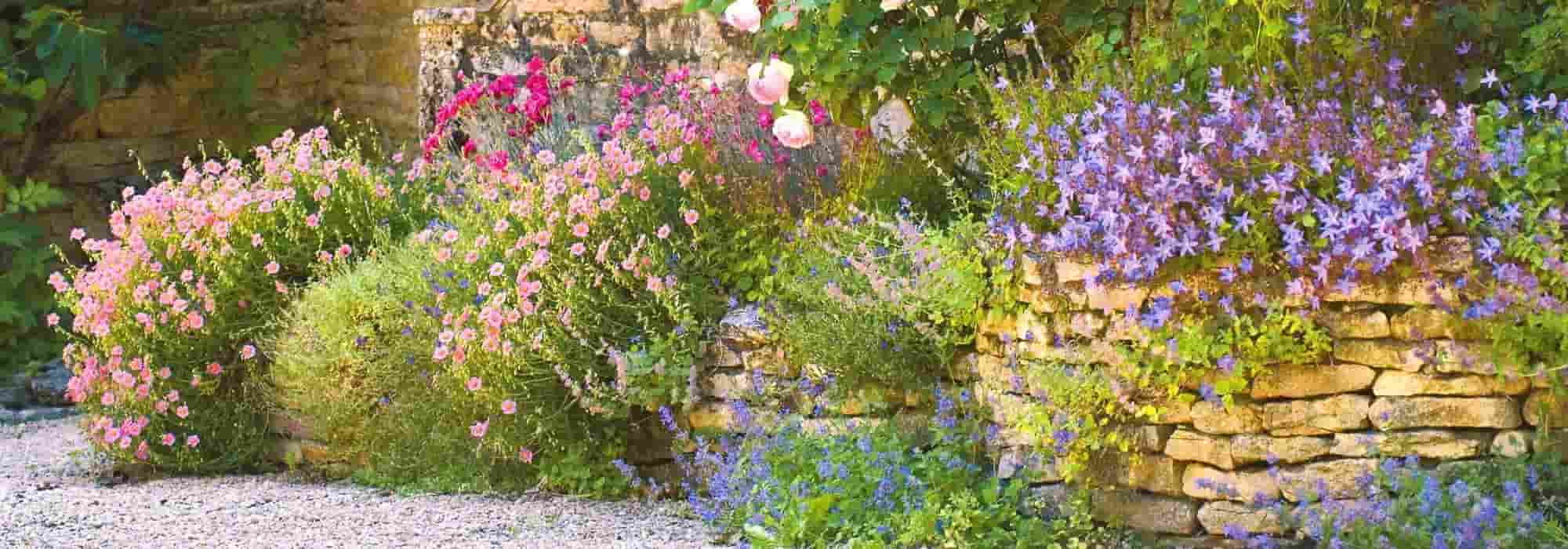
Pairing Campanulas
6 inspiration ideas
Contents
With their delicate bell-shaped flowers, campanulas bring a touch of elegance and fairy-tale poetry to the garden. Small or large, white, pink or mauve, starry or bell-shaped, trailing, upright or trailing, there is a wide range of varieties that are sure to make an impression. This easy and hardy perennial thrives in non-burning sunlight as well as in partial shade, ideally in well-drained, moisture-retaining soil. They are suitable for almost any use: in borders, rockeries, on a wall, in pots or window boxes, at the edge of a garden or in a woodland setting.
Discover which plants you can pair with them to create wonderful displays!
⇒ To learn all about Campanula, check out our plant sheet: “Campanulas: planting, cultivation and maintenance”.
On the edge
Small campanulas with a dense, carpet-like habit, such as Campanula carpatica, easily integrate into a border next to a path or lawn. Preferably choose campanulas that form a lovely, bushy cushion, not exceeding 30 to 40 cm in height. Campanulas with dentate foliage will be perfect and very decorative, like Campanula poscharskyana ‘Trollkind’ or Campanula garganica ‘Dickson’s Gold’, whose light green, almost yellow foliage adds brightness. You can pair them with white-flowered campanulas for a soft touch, such as campanula ‘Clips blanche’, with alyssums for a golden contrast, and aubrietes. They can also be combined with: edelweiss, pulsatilla anemones that will bloom early, gentians, white creeping gypsophila, or pale pink. These campanulas also thrive as groundcover at the base of roses or bushes. For a beautiful colourful effect, combine them with a pink Diascia, a annual euphorbia Diamond Frost with white flowers, or a Coreopsis.
In a flowerbed
Campanulas offer a multitude of possibilities in a border.
At the edge of the border:
Opt for smaller varieties such as Campanula poscharskyana ‘E.H. Frost’ with its starry white flowers. You can pair it with another campanula featuring drooping bell-shaped blue flowers, for example, Campanula rotundifolia. To keep them company, you can add other lovely wildflowers like cornflower, lady’s mantle, daisies, or hardy geraniums.
In the middle of the border:
Choose campanulas with larger flowers and an upright habit, such as peach-flowered campanula, which can be paired with its white-flowered sister. The Campanula ‘Sarastro’ also offers beautiful large bells of remarkable blue, while the flowers of Campanula takesimana are white, and Campanula glomerata ‘Genti Twisterbell’ stands out with its sublime clusters of flowers. You can mix them together, but also with echinacea, knautia, meadowsweet, aster, and sage.
At the back of the border:
Choose large varieties of campanulas such as Campanula lactiflora ‘Alba’, Campanula pyramidalis ‘Alba’, or false rampion, which will make a statement at the back of the border. Their soft, country feel will perfectly accompany a delphinium, a lupin, a valerian, ornamental allium, acanthus, and Cimicifuga. The campanula works wonders alongside the roundness of old roses and softens the heavy corollas of very red peonies.
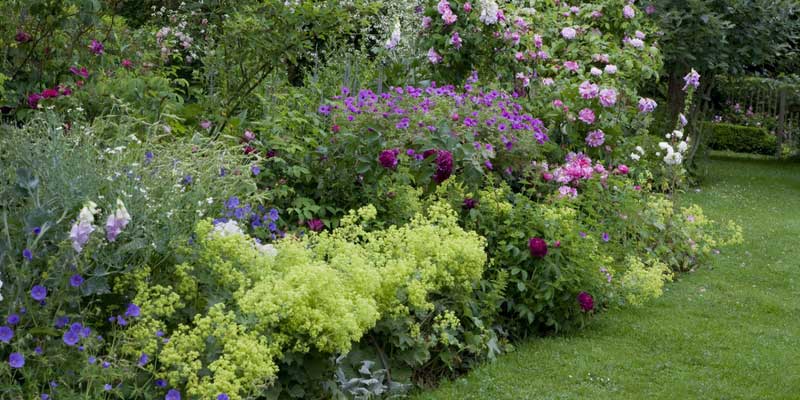
Lady’s mantle at the edge of a classic mixed border with hardy geraniums and lychnis. In the background: peonies, campanulas, delphinium. At the back of the border: Crambe cordifolia and roses (photo: Biosphoto / NouN)
Discover other Campanula - Bell Flower
View all →Available in 0 sizes
Available in 0 sizes
Available in 2 sizes
Available in 0 sizes
Available in 0 sizes
Available in 2 sizes
Available in 0 sizes
Available in 1 sizes
Available in 1 sizes
Available in 2 sizes
In a pot
When creating a stunning pot display, it’s important to harmoniously mix the heights of the flowers and diversify the foliage. For a successful composition, you can plant the Campanula poscharskyana with its delicate trailing habit right at the edge of your pot. In the second layer, pair it with tall-flowering varieties, such as Campanula glomerata ‘Caroline’ and Campanula ‘Sarastro’. To fill your pot, you can add plants with decorative foliage like a hosta, an Carex montana, or a Lysimachia nummularia ‘Goldilocks’. Don’t hesitate to also combine peach-leaved bellflowers with blue flowers or white flowers to add brightness and contrast.
Read also
How to build a dry stone wall?In a romantic garden
With its delicate bell-shaped flowers, campanula is ideal for a romantic garden where it will bring softness and a fairy-tale quality. Most campanulas will fit beautifully into this setting, but to keep with pink tones, you might choose Campanula takesimana ‘Elisabeth’ or Campanula punctata ‘Rubriflora’. If, on the other hand, you prefer white tones, opt for Campanula takesimana ‘Alba’ or Campanula ‘Wedding Bells’, which stands out with its double bells. Old roses are the perfect companions for creating a poetic atmosphere, such as Old Rose Cornelia, Climbing Rose Seagull, or David Austin Rose ‘James Galway’. Add some white lupins ‘La mademoiselle’ or the pink version for lupin ‘La Chatelaine rose’, astrantias, a peony, a foxglove, a white delphinium, columbines, Iris germanica, and white gaura. Sprinkle everything with a few gypsophilas with their airy blooms for an enchanting and poetic setting.
On a a low wall
It is not uncommon to find campanulas growing spontaneously on the tops of walls, in the gaps of paving, or between stones. Indeed, it is no coincidence that Campanula poscharskyana is also known as “wall bellflower.” Similarly, Campanula carpatica ‘Alba’ and Campanula portenschlagiana enjoy climbing. To accompany them in their ascents, you can plant perennials suited to the same conditions, such as Cerastium tomentosum ‘Yo Yo’, columbines that will self-seed year after year, an aubrieta, sedums, Artemisia schmidtiana ‘Nana’, a Cymbalaria muralis, Sempervivum, or even a fern Asplenium ceterach.
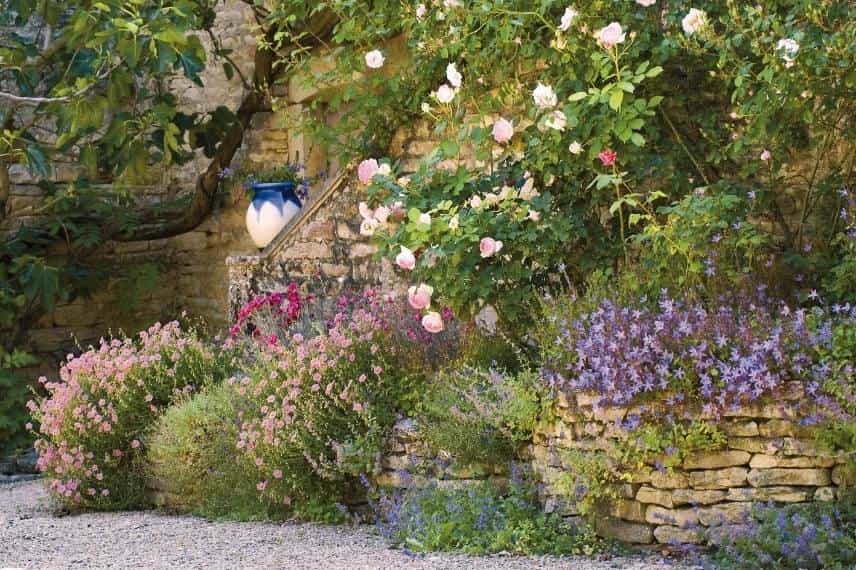
In a cool rockery
What is the common point among the different varieties of campanulas? They all enjoy growing among rocks! Like the Campanula glomerata ‘Alba’, the Campanula carpatica ‘Clips Blue’, or the Campanula poscharskyana ‘Lisduggan Variety’. In short, you have plenty of choices, allowing you to mix and match them, alternating between star-shaped and bell-shaped flowers. You can also pair a blue-grey flowered campanula with a white-flowered variety. And to add some variety, you can also combine other rock garden perennials, such as Iberis, sea thrift, aquilegias, moss phlox, helianthemums, mountain sandwort, nepeta, sempervivum, and gentians.
Further reading:
- Discover all our varieties of campanula.
- To learn everything about campanulas, check out our guide on planting, cultivation, and maintenance.
- Subscribe!
- Contents
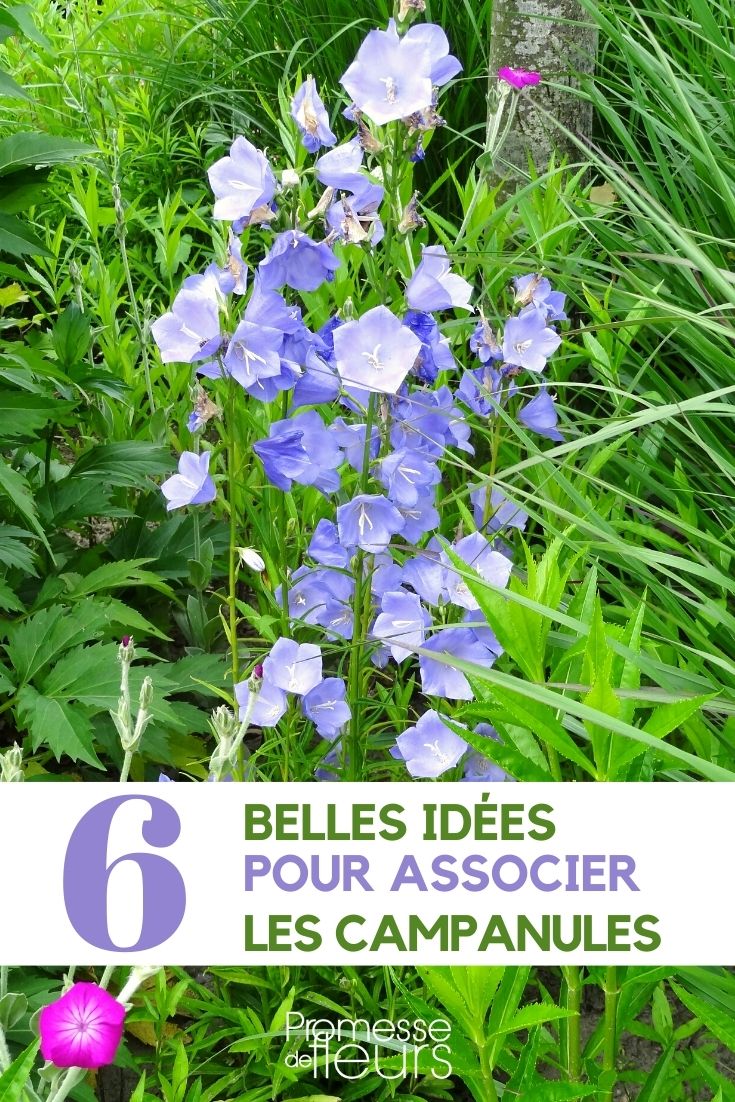































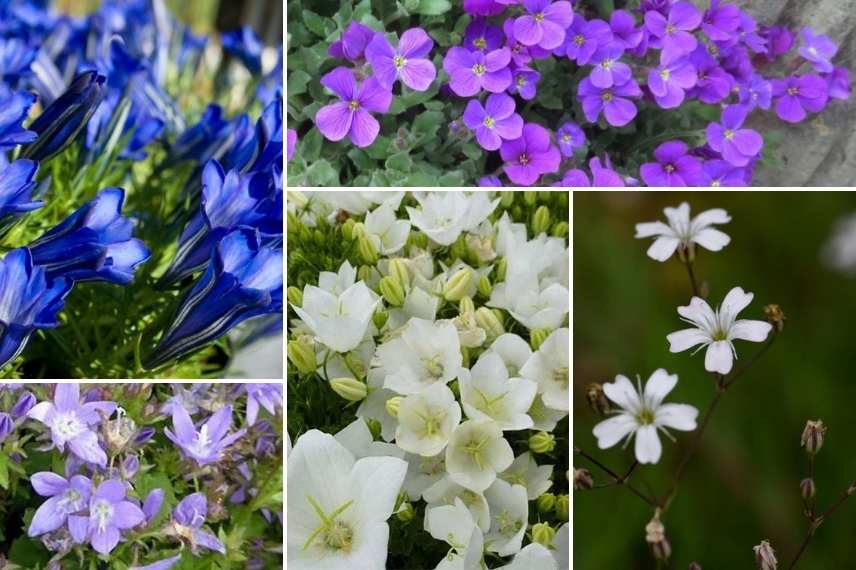
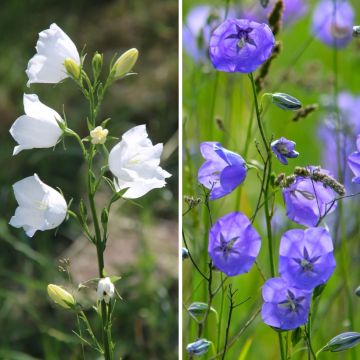
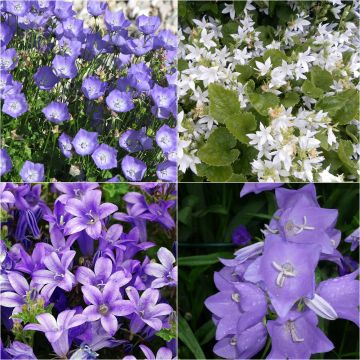
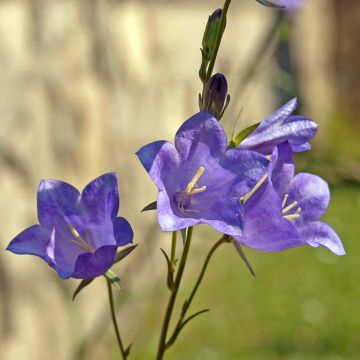
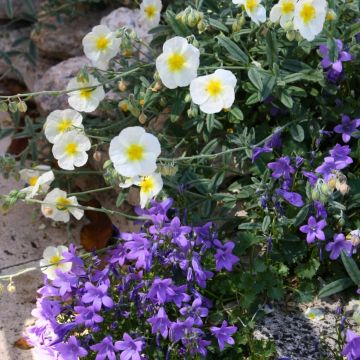
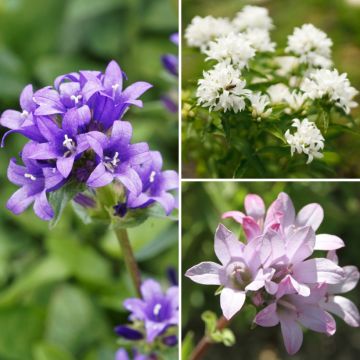
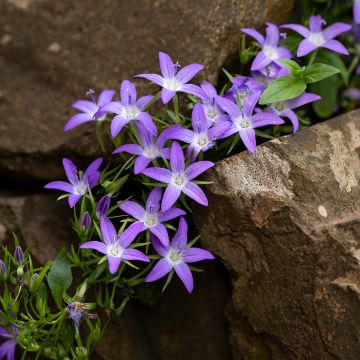
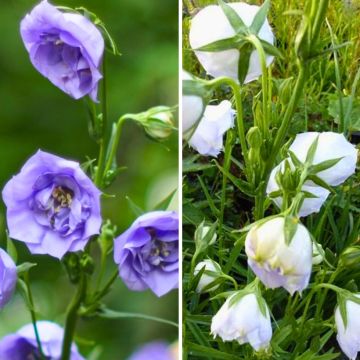
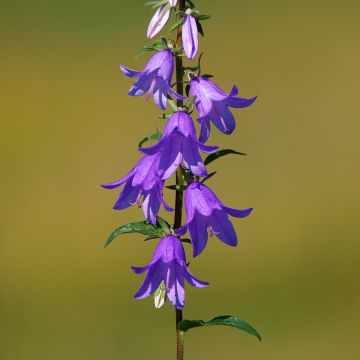
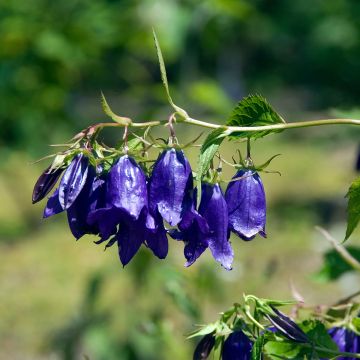
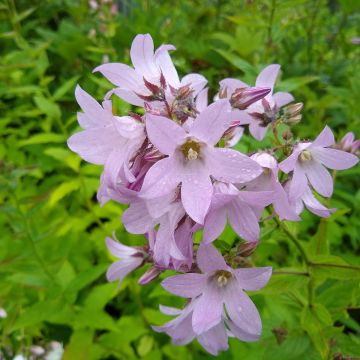
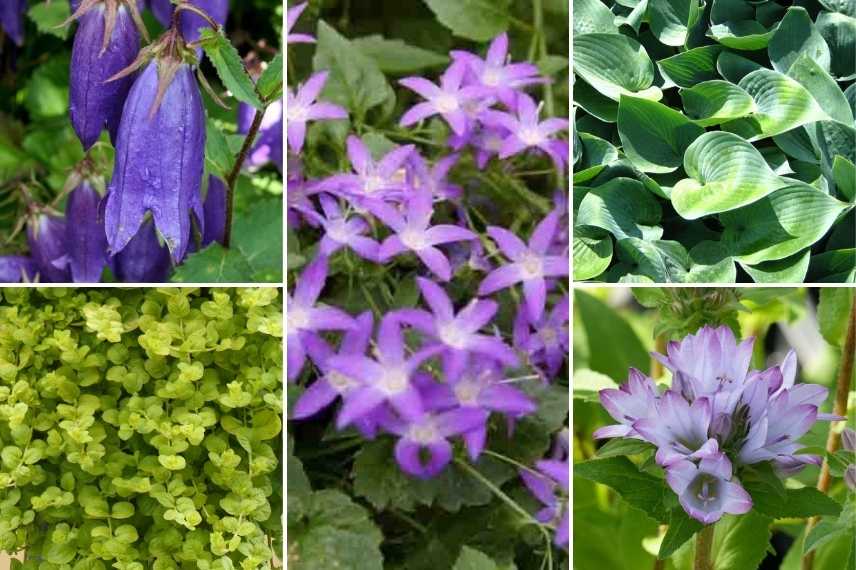
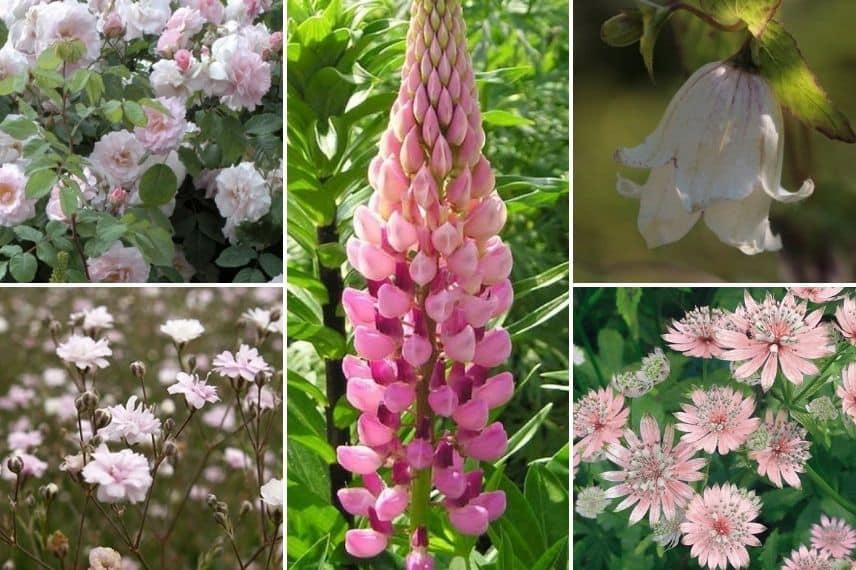
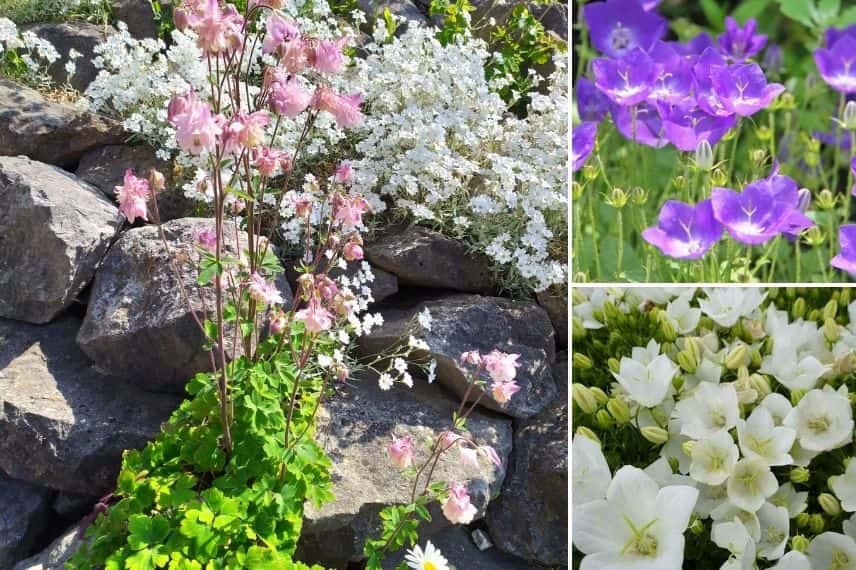
Comments